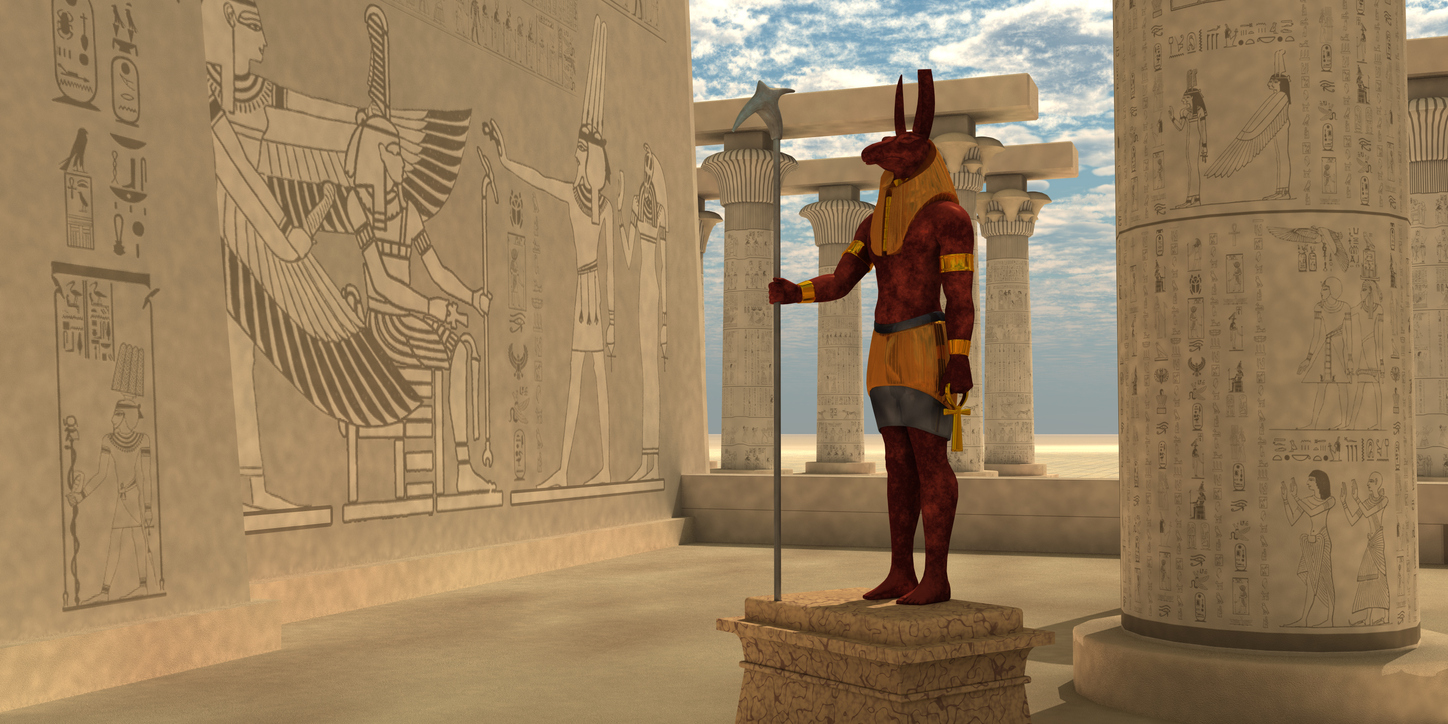In Part 1 of this new 5-part series, I discussed the history of the Djinn. Now, in Part 2, I’ll consider demons, explain why Djinn fear wolves and discuss the ancient Egyptian god, Set. In Part 3, I’ll talk about my first encounter with a Djinn in the desert. In Part 4, I’ll tell you about our battle. Finally, in Part 5, I’ll discuss an encounter with Set.
Part 2:
Demons, wolves & a god

Shayāṭīn
Besides the Djinn, Islam acknowledges the existence of demons, known as Shayāṭīn. However, both Islam and non-Islamic scholarship generally distinguish between angels, Djinn and Shayāṭīn, as being three different types of spiritual entities. The difference is that the Djinn can be both evil and good, whereas demons are exclusively evil.
The Djinn can have a religion. Indeed , there are different types of Djinn believers (Muslims, Christians, Jewish, polytheists, etc.) but the Shayāṭīn are purely evil.
Whilst their life span is much longer than humans, Djinn are mortals and do eventually die. Shayāṭīn, however, like some of the legends regarding vampires, only die when their leader ceases to exist.
The ancient Sumerians believed in Pazuzu, a wind demon/Shayāṭīn. Pazuzu had a canine face, bulging eyes, a scaly body, a snake-headed penis, the talons of a bird and wings. In the 1971 novel The Exorcist, Pazuzu is supposedly the evil spirit that possesses the young girl, Regan MacNeil.
The ‘man in the hat’, a night-time visitor to many people around the world, is probably a Shayāṭīn. The level of malevolence he shows makes me think he is more demon than Djinn. His influence is particularly clear in horror films. Consider the top-hatted, grinning monster in The Babadook. Think about Freddy in his fedora in A Nightmare on Elm Street. Or, how about one of my personal favourites, the decrepit preacher, Kane, in Poltergeist II?
When I first met the creature, I did not know whether it was a Djinn or a Shayāṭīn. What happened at the conclusion of our battle confirmed that it was, in fact, a Djinn.

Wolves
Djinn can appear in the shape of various animals, particularly scorpions, cats, owls and onagers. The dog is also often related to the Djinn, especially black dogs. However, the serpent is the form which is most associated with Djinn.
The Djinn lack individuality but they may gain it by materializing in human form. Even so, their face may still seem oddly indistinct, or as if it is in permanent shadow. Some scholars suggest that, even in human form, the Djinn retain something of their preferred animal form about them. In their features or in their manner, something gives the eerie sensation that they are not fully human. Is this sounding familiar to you? Someone you have met who just did not feel quite ‘right’? Perhaps you have met one.
Interestingly, the Djinn cannot appear in the form of wolves. Indeed, the wolf is the natural predator of the Djinn, its noble character contrasting with the Djinn. Wolves have a particular ability to disable the Djinn and encourage them to vanish. I have found this to be really useful information, considering my animal spirit is a wolf! However, whilst I clearly benefitted from this fact, it wasn’t something that I knew when I met the Djinn.

Set
Set (Egyptian: stẖ; also transliterated, Doctor Who fans, as Sutekh) is a god of chaos, fire, deserts, trickery, storms, envy, disorder and violence. Amusingly enough, for me, he is also the god of foreigners, in ancient Egyptian religion.
Set is usually depicted as a mysterious creature, referenced by Egyptologists as the Set animal. This beast resembles no known creature – a composite of an aardvark, a donkey, a jackal, or a fennec fox. As such, the animal has a curved snout, long rectangular ears and a canine body.
Set became synonymous with the Devil and an agent of evil. As such, you won’t find many figurines of him amongst the hundreds that the Egyptian traders try to sell tourists! However, Set was not always evil. In fact, the demonization of Set took place only after Egypt’s conquest by several foreign nations. Set, who had traditionally been the god of foreigners, thus also became associated with foreign oppressors. A connection was made between Set and their conquerors, the Assyrian and Persian empires. It was during this time of oppression that Set was particularly vilified. So much so, that Set’s defeat by Horus became the cause of great celebration. Whilst there are undoubtedly followers of the Left-Hand Path who worship Set, he was not always the personification of darkness.
For now, that’s enough of demons, wolves & a god – please keep safe! I will upload Part 3 soon!

